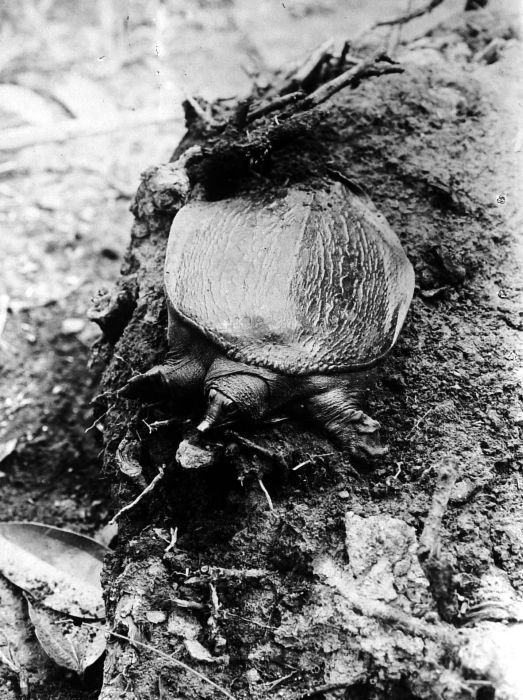Facts About Asiatic Softshell
The Asiatic softshell turtle, also known as the black-rayed softshell turtle, is a fascinating member of the Trionychidae family. These turtles can be found across a variety of Asian countries, including Bangladesh, Brunei, Cambodia, India, Indonesia, Laos, Malaysia, Myanmar, Singapore, Thailand, and Vietnam. They are notable for their unique leathery shells, which can grow up to 80 cm in length, and they typically weigh between 15-25 kg.
As omnivores, these turtles have a diverse diet that includes both plants and animals. One of their remarkable adaptations is an elongated snout, which facilitates prolonged submersion by enhancing gas exchange.
In terms of reproduction, these turtles are quite social. Females mate with multiple males and vice versa. After mating, females lay their eggs in well-protected nests, which take about 18-20 weeks to hatch. However, hatchlings face numerous threats from predators such as otters and tigers, as well as parasitic infections.
The life cycle of the Asiatic softshell turtle begins with hatching from eggs, followed by a sprint to the water to avoid predators. As they grow, they eventually become adults capable of reproduction. The species includes subspecies such as Amyda cartilaginea cartilaginea and Amyda ornata ornata, contributing to its diversity.
Regrettably, these turtles are frequently exploited for trade and consumption, leading to a significant decline in their population. They are currently listed as "Vulnerable" on the IUCN Red List, indicating they are at risk of extinction. Despite protective legislation, illegal harvesting continues to pose a serious threat to their survival.
In the wild, Asiatic softshell turtles are solitary and communicate in subtle ways. They have minimal interaction with humans and are unsuitable as pets. Given their specific habitat requirements and solitary nature, they have not been domesticated.

 Cambodia
Cambodia